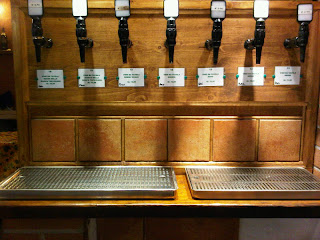 At the Garden shop at Wisley (Surrey), we just read that Palomino = Golden Chasselas. Fortunately it turns out that Chasselas and Golden Chasselas (aka Chasselas Doré) are not the same thing.
At the Garden shop at Wisley (Surrey), we just read that Palomino = Golden Chasselas. Fortunately it turns out that Chasselas and Golden Chasselas (aka Chasselas Doré) are not the same thing.However, fearing another extinction by synonym (such as we have suffered before) we turned as ever to The Oxford Companion to Wine. Here the waters if not muddy are not quite clear.
Under Chasselas, we read that 'In France it [Chasselas] is rather despised, not least because as Chasselas Doré or Golden Chasselas, it is France's most common table grape.' The entry goes on to say 'Total French plantings in 2000 were more than 3,000 ha/7,500 acres.', not quite removing the idea that Chasselas is not the same thing as Golden Chasselas.
But others are clearer that Chasselas and Golden Chasselas are not the same; www.winegeeks.com states; 'It (Chasselas) is not related to the American grape Golden Chasselas which is thought to be the Sherry grape Palomino.' (How an American grape became the variety for the base wine of Sherry is not explained, or are we missing something here?)
Now to the relationship or non-relationship between Golden Chasselas and Palomino.
Under Palomino the same Oxford Companion to wine puts things thus 'California's acreage of the variety [Palomino], once wrongly identified as Golden Chasselas...'
Oz Clarke however is not quite so categorical; 'the Grape grown in California as Golden Chasselas is most likely to be Palomino.', adding elsewhere the seemingly contradictory 'Palomino used to be known as Golden Chasselas.' (and stating by the way that Palomino is 'one of the dullest grapes in the world').
Others still assert that Palomino = Golden Chasselas;
'Golden Chasselas
Known in the Napa Valley and adjacent districts as the Golden Chasselas and elsewhere in the state under its proper name, the grape is not a variety of Chasselas, but none other than the Palomino, celebrated for the production of Sherry in the Jerez district of Spain and elsewhere.' (www.oldandsold.com).
If we're not out of the woods with Golden Chasselas yet, it is comforting to know that Chasselas is not Palomino. Chasselas is after all a grape we have appreciated in the wines known as Fendant in Switzerland, but also in the Loire, Alsace and thanks to Eric Pfifferling, Tavel.
Our bottle of Niepoort Palomino will no doubt settle the matter of whether Oz Clarke is right or not but is that Palomino Fino or Palomino Basto? That doesn't matter so long as neither is Chasselas, we reckon.















































